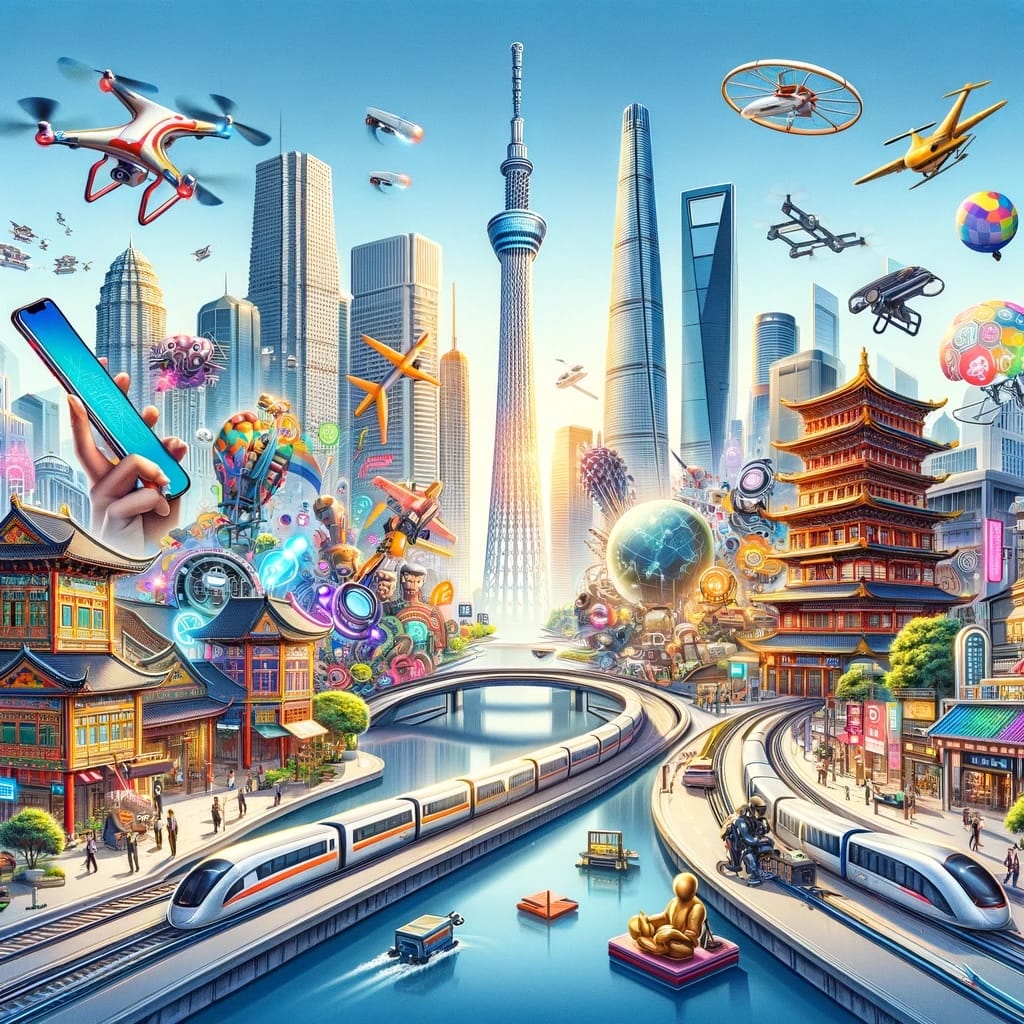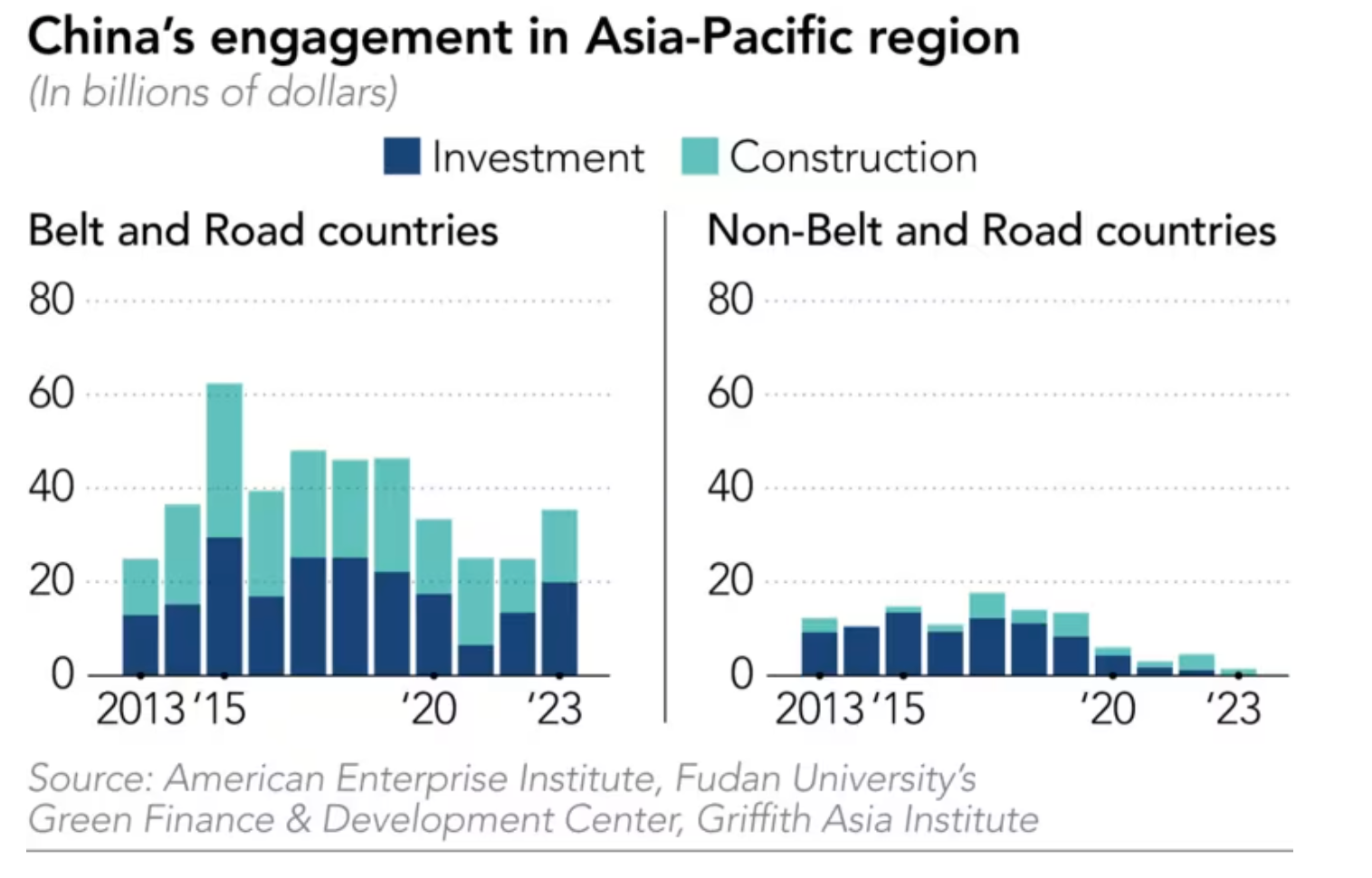This Week in Asia #10: Don't Ignore Asia Tech

In our 10th issue, we reflect on the departed journalist from TechCrunch, Catherine Shu's final article: "Don't Ignore Asia Tech", which summarizes what really happened in the last decade with different innovations spurring from the whole Asia Pacific. We share a different picture of China's advancement in generative AI and the recent breakthrough from researchers in the Alibaba group: EMO might change how our perspective that the lead by the US against China is smaller than we think. Last but not least, crypto is back and not to be pedantic, the US is not leading but the Asia Pacific is leading the way.
What we are reading this week
AI
- This is the state of generative AI in China by Paul Triolo and Anarkalee Perera from the China Project. Why we recommend this: A useful guide if you want to understand what is going on with generative AI in China.
- China offers AI computing ‘vouchers’ to its underpowered start-ups by Eleanor Olcott and Qianer Liu from Financial Times. Our Take: Beijing is poised to introduce a subsidy program specifically designed for AI organizations utilizing domestically-produced chips, in a strategic move to enhance the use of local components over foreign ones. In line with this initiative, Beijing has officially sanctioned the use of at least 40 Large Language Models (LLMs) for public applications. This decision is part of a broader effort to expedite the integration of AI technology, simultaneously ensuring rigorous regulation and oversight of its deployment.
- EMO: Emote Portrait Alive - Generating Expressive Portrait Videos with Audio2Video Diffusion Model under Weak Conditions by Linrui Tian, Qi Wang, Bang Zhang, Liefeng Bo from Institute for Intelligent Computing, Alibaba Group. Our Take: Of course, this new AI video generation tool shows China's resilience in its AI talent bench and ideas despite Open AI's recent demonstration with Sora. Don't count China out of the AI race even though it's playing catch-up.
Crypto, Blockchains and Web3
- $1.9M for BuildBear Labs to build on their dApp testing platform by BackScoop. Our Take: With the recent price surge from Bitcoin and Ethereum, the crypto market is back. Of course, if you are building tools or infrastructure, funding is still available for you.
- How Crypto Investigators uncovers scammers' blockchain billions, scale in money-laundering in Asia by Danielle Keeton-Olsen from SCMP. Our Take: A summary of how the scammers work and how the article seems to suggest evidence of a global money-laundering process connecting seemingly disparate criminals.
- Animoca Brands invests in SG Web3 entertainment startup by Jofie Yordan from Tech in Asia. No take from our side because the funding is not disclosed.
- Hong Kong’s crypto licensing scheme attracts less interest than Singapore with 24 applicants day after the deadline by Iris Deng from SCMP. No take on our end except that I don't see why they have to keep the comparison with Singapore while they should look at Dubai as well.
Recommendations
- Don't Ignore Asia Tech, a farewell piece by Catherine Shu from TechCrunch who has been made redundant by the company. Why we recommend this: It summarizes pretty much the history with punchy anecdotes on how Asia Pacific is now the most dynamic and fast-growing region with the 12 years of coverage seen from the lens of a journalist from WeChat in China to Grab in Southeast Asia. Our editorial team feel bad for her for what happened and we wish her all the best. Catherine was one of the earliest guests on Analyse Asia episode 14.
- Fraud In Asia by Michael Fritzell from Asian Century Stocks. Why we recommend this: The article reviews Chin Hwee Tan and Tom Robinson’s Asian Financial Statement Analysis and Michael illustrates the concepts from the book into real-world examples of fraud and misrepresentation across Asia. Worth a read if you want to understand how to read financial statements to evaluate Asian or Chinese stocks in the market.
China
- China Two Sessions coverage by South China Morning Post. Our Basic Introduction 101: The 'Two Sessions,' an esteemed annual event in China's political calendar, brings together the nation's two principal political entities: the National People's Congress (NPC) and the National Committee of the Chinese People's Political Consultative Conference (CPPCC). These sessions are a platform for disclosing China's strategic direction in areas such as the economy, military, trade, diplomacy, and environmental initiatives. As the People’s Republic of China celebrates its 75th anniversary this year, there is anticipation that new stimulus measures may be announced during the sessions. In this significant year, it is expected that President Xi Jinping will balance a multifaceted agenda, with economic growth being one of several key areas of focus. In simple words, whatever happens in China's Two Sessions, will provide a glimpse of where the Chinese government is heading. While they have cancelled the Prime Minister's annual panel, they have added the central bankers' panel to put forward their strategies to stabilize the economy.
India
- Ambani’s Reliance and Disney merge India media assets to form $8.5B joint venture by Manish Singh from Techcrunch. No take and do take note that the merger is subject to regulatory and shareholder approval and both firms expect it to complete by the end of March 2025. Just be warned that there might be anti-trust implications.
Japan, Korea, Taiwan & Hong Kong
- TSMC founder Morris Chang on the evolution of the semiconductor industry in a lecture at MIT, Nov 2023. Why we recommend this: Morris Chang shares his insights on the semiconductor industry and he foresaw changes in the global semiconductor landscape, suggesting that current leaders might lose their edge to emerging nations in the coming decades.
Southeast Asia
- SEA startup salaries declined in 2023, except for senior hires: report by Samreen Ahmad from Tech in Asia. Our Take: The reason is that there are two forces at work. One, they are using generative AI to reduce the amount of manual labour required and two, they keep the senior people who can plan out how they can build remote teams out in countries with lower cost.
- Chinese investment in Asia rose 37% in 2023, led by Indonesia by Cissy Zhou from Nikkei Asia Review. Here are the key highlights with important data points summarized from the article:
- Significant Increase in Investment: Chinese investment in the Asia-Pacific region surged by 37% in 2023, reaching nearly $20 billion. This increase is particularly notable against the backdrop of a 12% decline in overall foreign direct investment into the emerging economies of Asia.
- Construction Contracts on the Rise: Alongside direct investments, Chinese construction contracts in the region also saw a substantial increase, with about $17 billion in contracts signed, marking a 14% rise from the previous year.
- Focus on Belt and Road Initiative (BRI) Countries: A large portion of these investments and construction activities were concentrated in countries aligned with the BRI. Investment in non-BRI countries dropped to an all-time low, making up just $120 million, a 90% decrease from the previous year.
- Emergence of Green China Engagement: An emerging trend in 2023 was China’s significant focus on green energy and mining investments. This reflects a strategic shift in China's engagement towards sectors crucial for the green transition, like lithium and battery materials for electric vehicles.
- Geographical Distribution and Sector Focus: Southeast Asia received around 50% of China’s regional investment, up 27% from the previous year, with Indonesia being the largest recipient at approximately $7.3 billion. Key sectors attracting Chinese investment included technology, such as TikTok’s acquisition of a significant stake in Tokopedia, and infrastructure related to the green transition.

Our Sponsor:

Do you manage your IT for distributed teams in Asia? You know how painful it is! Esevel helps your in-house team by taking cumbersome tasks off their hands and giving them tools to manage IT effectively. Get help across 8 countries in the Asia Pacific from on and offboarding, and procuring devices, to real-time IT support and device management. With their state-of-the-art platform, gain complete control of all your IT infrastructure in one place. Our team of IT support pros are keen to help you grow! Check out Esevel and get a demo today. Use our referral code “ASIA” for 3 months Free. Terms and conditions apply.
Our Ask:
If you like this newsletter, please like and share it. You can subscribe to our newsletter here or on our main site. Follow and subscribe on YouTube, Apple Podcasts, Spotify, X (formerly known as Twitter), Threads and TikTok.
Image Credits:
The image is generated with DALLE-3 from OpenAI by the following prompt: "Generate an image with the theme 'Don't Ignore Asia Tech' with key iconic buildings of Asia and different technologies in the picture" and the Gen ID is "6E65U2EkPHfacyXp". The picture embodies the theme "Don't Ignore Asia Tech". It features iconic Asian buildings like the Tokyo Skytree, Petronas Towers, Shanghai Tower, and Marina Bay Sands, integrated with symbols of technology such as smartphones, drones, AI robots, and high-speed trains. This vibrant and futuristic scene showcases the dynamic blend of traditional architecture and modern technology, highlighting Asia's advancing tech landscape.


